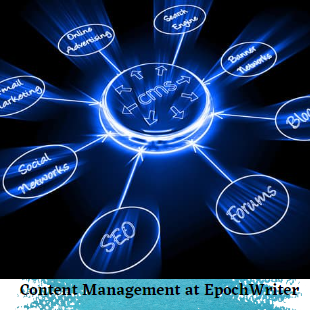Creating high-quality content is only half the battle in today's competitive digital landscape. You need an effective distribution strategy to ensure your content reaches your target audience. With countless pieces of content vying for everyone's attention, a well-crafted distribution strategy is mandatory to amplify your message and extend your reach. You can use several tactics across various channels and platforms to maximize your reach. Seasoned marketers and beginners alike will find information that can help them create an effective distribution strategy.
Understanding Your Audience
Before you can create a successful content distribution plan, you need to understand your target audience. When you know who your audience is, what it cares about and how it consumes content, your distribution plan is more effective and will increase readership. Understanding your audience requires several steps, including:
- Identify Demographics: Demographics include information about your audience, including age, gender, location, income and education.
- Analyze Interests and Preferences: The psychographics of your audience can also tell you how to tailor your distribution. Interests and preferences include types of content your audience prefers, subjects that resonate with your audience and how your audience interacts with your content – do they prefer in-depth articles, quick reads or interactive content?
- Understand Behavioral Patterns: Knowing your audience's behavior provides insights into when they consume content. Identify social media platforms and websites your audience frequents so you can tailor your distribution strategy to focus on those channels. Determine the best time of day for your audience. You want to send content when they are most active. Finally, know whether your audience primarily uses mobile devices, tablets, or desktops to access your content.
- Utilize Analytics Tools: Analytics tools, such as Google Analytics, social media analytics and customer surveys, can help you gather and analyze data about your audience.
- Create Audience Personas: Once you have gathered all the data, you can now create customer personas. These fictional characters represent key segments of your audience's demographic, psychographic and behavioral information. You can then map your content to each persona, ensuring you address their specific needs and preferences.
Finally, this is not a one-and-done deal. Your audience is always changing, so continuously update per audience personas by gathering information on a regular basis.
Using Social Media Platforms
If you want to reach a broad audience, social media platforms are pivotal. Each platform has its own unique features. Each also caters to different user demographics. Creating a tailored approach is essential to maximize reach and engagement.
Facebook
Meta, or Facebook, offers groups, ads and live videos for advertisers. Groups are communities centered around specific interests, much like this group for a logger or this group for romance writers and readers.
Facebook ads have targeting options based on interests, demographics and behaviors. You can use ads to boost your content's visibility and reach a wider audience. Ad types include video ads, carousel ads and sponsored posts.
You can also have real-time interaction with your audience by "going live." Share content, host Q&A sessions, and even provide behind-the-scenes looks at your brand and products. Make sure you promote live sessions well in advance to maximize attendance.
X (Formerly Twitter)
You can use hashtags, Twitter chats and promoted tweets to reach a wider audience. Hashtags increase the discoverability of your content. Chats allow you to engage with your audience and industry peers. They usually revolve around certain topics and scheduled times so you can share your insights with participants.
Promoted tweets can also extend your reach to a broader audience. Highlight key pieces of content, drive traffic to your website and increase engagement through promoted tweets.
LinkedIn
Another platform that caters to demographics different from Facebook or Twitter is LinkedIn. You can publish long-form content on LinkedIn Pulse positions as an authority in your industry for LinkedIn's professional audience. This platform also has groups and a sponsored content feature to help you maximize your reach.
Instagram
You can share content in short, engaging snippets using Instagram Stories. IGTV is also ideal for sharing longer video content. You can promote your IGTV through Instagram Stores and posts. You can also collaborate with influencers to expand your reach. They have dedicated followers who trust their recommendations. When you partner with influencers whose audience aligns with your target demographic, you can significantly extend your reach as long as you provide authentic and engaging content.
Pinterest
Pinterest uses high-quality images to drive traffic. If you create visually appealing pins that link back to your content, you can extend your reach through Pinterest. This site also features boards where you can post themed content. Finally, Rich pins provide additional information directly on the pin, including article headlines, product details or recipe ingredients.
Leverage Email Marketing
One of the most effective ways to reach and engage your audience is through email marketing. When you use strategic email campaigns, you can maximize content distribution and ensure that your messages reach the right people at the right time. Various methods to engage your audience through email include:
- Newsletters: Send regular newsletters to curate content from your blog, website and other platforms. Consistently providing valuable and relevant information helps maintain a strong connection with your audience. It also keeps your audience informed about your latest updates, products and services. A well-crafted newsletter can drive traffic to your site, increase engagement and boost conversions.
- Personalization: In today's competitive digital landscape, personalization is crucial. Ensuring your email content is based on user preferences and behavior can significantly increase the relevance of your message. Collect data from past interactions, including purchase history, engagement metrics and browsing behavior, to create personalized email campaigns. Address subscribers by their names and recommend products, services and content based on your audience's interests.
- Segmentation: Segmenting your email list allows you to send targeted content to different audiences interested in your products and services. Create segments based on interests, purchase behavior, demographics and engagement levels, such as new subscribers, loyal customers and inactive users.
By incorporating email marketing tactics into your content distribution strategy, you can maximize your reach and increase engagement.
Collaborate with Influencers
When you partner with influencers, you can significantly increase content distribution. Influencer partnerships allow you to establish new audiences and amplify your reach. To create a partnership, you must first identify relevant influencers – those who have an audience that aligns with your target demographic.
Conduct thorough research to find influencers who have a large following and engage with a community that matches your brand's values and interests. Social media analytics and influencer marketing platforms can help you locate the right influencers based on metrics such as engagement rates, audience demographics and content relevance.
Once you locate one or more influencers, create an authentic partnership. Work with influencers to create content that feels genuine and not overly promotional. An authentic partnership allows influencers to have the creative freedom to share your message using the influencer's personal brand and voice. Influencers might use sponsored posts, tutorials, product reviews and even takeovers on your social media channels.
The goal is to integrate your brand into their content while making the promotion feel natural and trustworthy.
Track performance using analytics and tracking links. Set clear objectives for each campaign, such as increasing brand awareness, boosting sales or driving traffic. Tracking links can monitor click-through rates, conversions and other key performance indicators.
Analyze engagement metrics, such as shares, comments and overall sentiment to gauge how well the content is resonating with the audience. When you regularly review metrics, you can see just how effective or ineffective your influencer partnership is, allowing you to make data-driven decisions for each campaign.
Platforms such as BuzzSumo and Traackr can help identify and manage influencer partnerships.
Optimize for Search Engines
Optimizing content for search engines while keeping it humanized is crucial for maximizing your reach and ensuring your content is discoverable by a wider audience. When you implement effective SEO strategies, you can increase your rank on search engine results pages, which drives more organic traffic to your site.
Optimizing for search engines includes:
- Keyword Research: To effectively use SEO, you must thoroughly research keywords to identify the keywords your audience is searching for. Long-tail keywords are more specific and less competitive and attract targeted traffic. Use a good mixture of regular keywords and long-tail keywords.
- On-Page SEO: Optimizing various elements of your web pages improves their search engine ratings. Web pages should include title tags, meta descriptions and headers. Title tags should include your primary keywords. Compelling meta descriptions that summarize content can encourage users to click through to your site. Headers structure content and make it easier to read and understand. Finally, use descriptive alt text for images and optimize URLs. Your site should also be mobile-friendly.
- Content Quality: The cornerstone of effective SEO is high-quality content. A human should write it – not AI – and it should be comprehensive and engaging and provide real value to your readers. Use a balanced mixture of text, images, videos and infographics to make your content more engaging. High-quality content is more likely to be shared and linked to.
- Backlinks: Building high-quality backlinks is essential for increasing domain authority and improving search engine rankings. Only use backlinks from reputable sites to show search engines that your content is trustworthy and valuable. You can acquire high-quality backlinks by creating sharable content and collaborating with other websites and influencers. You can also create high-quality backlinks by guest blogging. Avoid low-quality or spammy backlinks that can harm your SEO efforts.
Repurpose Content
Repurposing content can extend the lifespan of your existing materials and reach a wider audience across different platforms. When you transform your content into various formats, you can cater to different preferences and consumption habits. Ways to repurpose content include:
- Blog Posts to Videos: Convert popular blogs into engaging videos for platforms such as YouTube or social media content. Video content is highly consumable and sharable, which makes it a powerful tool for reaching a broader audience. Use visuals, voiceovers and animations to bring your blog content to life. Create explainer videos, tutorials or even vlogs that summarize and expand on your blog posts to tap into the growing trend of video consumption and drive traffic to your site.
- Infographics: Create infographics to represent data-heavy content visually. Infographics condense complex information into content that is easily digestible and visually appealing. Graphics, charts and icons can highlight key points and statistics from your blogs or reports. You can easily share infographics on social media, embed them in blogs or include them in presentations. These versatile tools for content distribution can enhance your SEO efforts by attracting backlinks from other sites that reference your visual content.
- Podcasts: To reach audio-focused audiences, turn written content into podcasts. This content format is becoming increasingly popular and offers a convenient way for people to consume content on the go. Select relevant blog posts, articles or even interviews and transform them into podcast episodes. Add depth to content by discussing additional insights, interviewing experts or sharing personal anecdotes. Distribute podcasts to platforms such as Apple Podcasts, Spotify and Google Podcasts to expand your reach and engage a new segment of your audience.
- E-Books and Guides: Compile blog posts into comprehensive e-books or guides. Using this approach allows you to provide more in-depth information on a particular topic and offer it as a valuable resource to your audience. Use e-books and guides as lead magnets to grow your email list or as downloadable content to enhance user engagement. Ensure the content is well-organized, visually appealing and provides actionable insights. You can promote e-books and guides through social media, your website and email marketing campaigns.
Engage in Content Syndication
You can distribute your content across various channels using content syndication. Leverage guest blogging, content aggregators and partnerships to reach a broader audience.
- Guest Blogging: You can syndicate your content by writing guest posts for reputable blogs in your industry. Locate influential blogs and websites that cater to your target demographic and offer to contribute high-quality, relevant articles. This is also a great way to get backlinks to your site and enhance SEO efforts. Your posts should be informative and engaging and should align with the host's audience and content standards.
- Content Aggregators: You can significantly increase your visibility by submitting content to content aggregators. Platforms such as Reddit, Medium and Quora are just some of the platforms for sharing articles, blog posts and other content.
- Partnerships: You can also amplify your content distribution efforts by forming partnerships with other businesses and industry peers. You might co-author a blog, feature each other's content in newsletters or join together to do a joint webinar or podcast. Partnerships allow you to tap into each other's audiences and increase your reach and credibility.
Ensure that syndicated content includes links back to your original post to drive traffic to your site.
Utilize Paid Advertising
You can use paid advertising through Google Ads, social media ads and sponsored content to amplify your content's reach. However, while more people see your content, it's not organic. You must be able to effectively research keywords to ensure each paid click is reaching your target audience – not someone who clicks links just to click links.
Foster Community Engagement
Build a community around your content to drive organic reach and engagement. Engage with your audience in the comments section of your blog and social media posts. Participate in forums and groups related to your content. Start a social media group to discuss your content topics. You can even host webinars and live Q&A sessions to engage directly with your audience.
Create Top-Quality Content
Maximizing the reach of your content requires top-quality content first. By understanding your audience and leveraging various platforms, you can ensure your content reaches its full potential. EpochWriter can help you create content that makes human readers and search engines happy.

















Comments